Beneath the shimmering surface of tropical oceans lies a world of vibrant color and ceaseless activity. Among its most captivating residents are the parrotfish, a family of marine marvels renowned for their striking hues, unique feeding habits, and indispensable role in maintaining the health of coral reefs. Often described as the “gardeners of the reef,” these fascinating fish are far more than just pretty faces; they are vital architects of the underwater landscape, constantly shaping and cleaning their environment.
From their distinctive parrot-like beaks to their remarkable ability to change sex and even sleep in a self-made mucus cocoon, parrotfish embody some of nature’s most extraordinary adaptations. Understanding these creatures offers a deeper appreciation for the intricate balance of marine ecosystems and highlights the critical importance of conservation efforts.
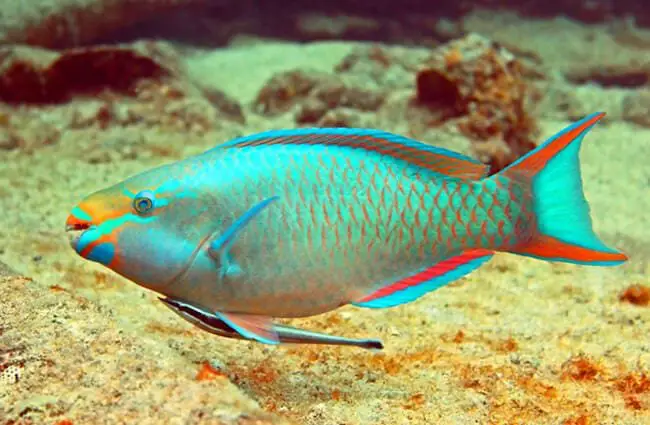
The Colorful World of Parrotfish: Basic Biology and Behavior
Parrotfish belong to the family Scaridae, a diverse group of about 90 species found predominantly in tropical and subtropical waters around the globe. Their name is a direct nod to their most distinguishing feature: a fused set of teeth that form a strong, beak-like structure, perfectly adapted for scraping algae from hard surfaces.
Habitat and Distribution: Where to Find These Reef Dwellers
These magnificent fish are quintessential residents of coral reefs, seagrass beds, and rocky shorelines in tropical and subtropical regions worldwide. Their presence is a strong indicator of a healthy reef ecosystem. Aspiring animal lovers and marine enthusiasts hoping to spot a parrotfish in its natural habitat should focus their search on:
- Coral Reefs: This is their primary domain, offering abundant food sources and shelter. Look for them grazing on the surfaces of corals and rocks.
- Shallow Coastal Waters: Many species prefer depths ranging from just a few feet to about 100 feet, making them accessible to snorkelers and divers.
- Geographic Hotspots: The Indo-Pacific, Caribbean Sea, Red Sea, and the Great Barrier Reef are particularly rich in parrotfish diversity.
When observing them, approach slowly and quietly to avoid startling them. Their vibrant colors often make them easy to spot against the backdrop of the reef.
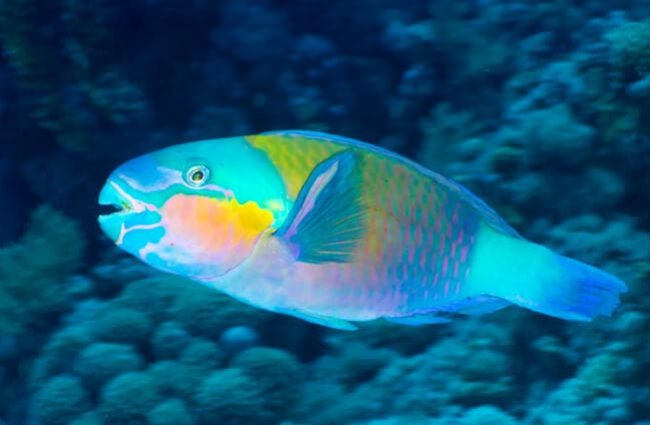
Diet and Feeding Habits: The Reef’s Relentless Grazer
Parrotfish are primarily herbivorous, playing a crucial role as grazers. Their diet consists mainly of algae that grow on dead coral and rocky substrates. This feeding behavior is not just about sustenance; it is a vital ecological service.
- Algae Scraping: Using their powerful beaks, parrotfish scrape off algae, preventing it from overgrowing and smothering live corals. This allows corals to thrive and recruit new polyps.
- Coral Consumption: While primarily herbivorous, some species also consume small amounts of live coral, particularly during their grazing activities. This might seem destructive, but it is a natural process known as bioerosion, which helps to recycle nutrients and create new habitats.
- Sand Production: A remarkable byproduct of their feeding is the creation of sand. The parrotfish ingest coral and rock fragments along with the algae. Their powerful pharyngeal teeth (located in their throat) grind this material into a fine powder, which is then excreted as sand. A single large parrotfish can produce hundreds of pounds of sand annually, contributing significantly to the white sandy beaches and seafloors of tropical islands.
Life Cycle and Reproduction: A Tale of Transformation
The reproductive lives of parrotfish are among the most intriguing in the marine world, characterized by complex social structures and remarkable sex changes.
- Hermaphroditism: Most parrotfish species are sequential hermaphrodites, meaning they change sex during their lifetime. They typically begin as females (the “initial phase”) and later transition into males (the “terminal phase”).
- Social Structure: Parrotfish often live in harems, with one dominant terminal phase male overseeing a group of initial phase females and smaller, non-dominant males.
- Mating Rituals: Spawning usually occurs in groups or pairs, often at specific times of the day or lunar cycles. The dominant male will display elaborate courtship rituals to attract females. Eggs are typically pelagic, meaning they float in the open water until hatching.
- Color Phases: The initial phase (IP) fish are generally duller in color, often reddish-brown or gray, and can be either male or female. The terminal phase (TP) fish are typically larger, more brightly colored, and always male. This dramatic color shift is a visual cue of their sexual transformation and social status.
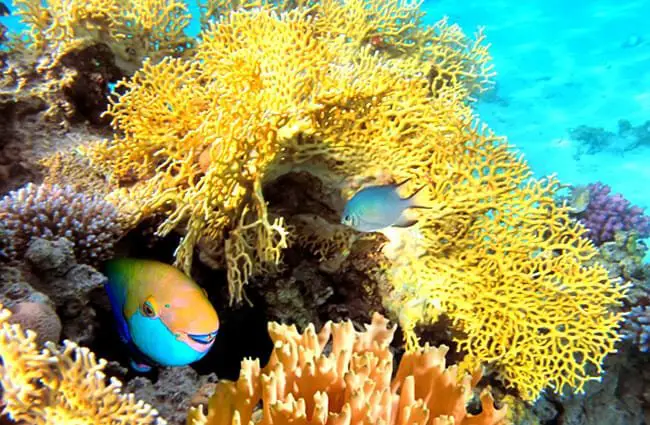
Ecological Architects: Parrotfish in the Ecosystem
The role of parrotfish extends far beyond their individual lives; they are cornerstones of coral reef health, performing functions that are critical for the entire ecosystem.
Contribution to Ecosystem Health
Parrotfish are indispensable for the resilience and biodiversity of coral reefs.
- Algae Control: By constantly grazing, they prevent fast-growing macroalgae from outcompeting and smothering slow-growing corals, especially after disturbances like coral bleaching events or storms. This “top-down” control is crucial for reef recovery.
- Nutrient Cycling: Their feeding and excretion processes contribute to the cycling of nutrients within the reef environment.
- Habitat Creation: The sand they produce forms beaches and seafloors, creating new habitats for other marine organisms. Their bioerosion also creates nooks and crannies within the reef structure, offering shelter to smaller fish and invertebrates.
Interactions with Other Animals
As a prominent reef species, parrotfish interact with a variety of other marine creatures.
- Predators: Larger predatory fish, such as sharks, groupers, and barracudas, prey on parrotfish. Their vibrant colors can make them conspicuous, but their speed and ability to hide in reef crevices offer some protection.
- Cleaner Fish: Like many reef fish, parrotfish often visit “cleaning stations” where cleaner wrasse or shrimp remove parasites from their bodies.
- Coral Symbionts: While they graze on algae, their activities indirectly benefit the symbiotic algae (zooxanthellae) living within corals by ensuring the corals have enough light and space to thrive.
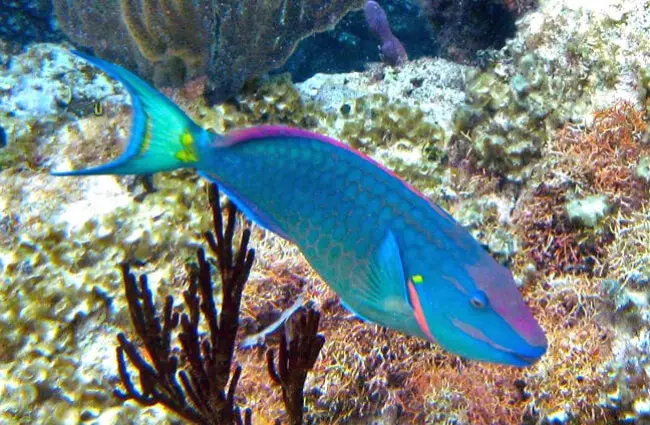
Fascinating Facts and Unique Adaptations
Beyond their ecological importance, parrotfish possess several truly remarkable adaptations that make them stand out in the marine world.
- The Mucus Cocoon: Many parrotfish species secrete a transparent, protective mucus cocoon around themselves at night. This “sleeping bag” is believed to mask their scent from nocturnal predators like sharks, provide a physical barrier against parasites, and potentially offer protection from UV radiation. It is a truly unique form of nocturnal defense.
- Color-Changing Masters: The dramatic color changes associated with their sex change (from initial phase to terminal phase) are not the only instances of their chromatic versatility. Some species can also rapidly change their coloration to blend in with their surroundings or to signal to other fish.
- Evolutionary Beak and Pharyngeal Teeth: The fusion of their teeth into a beak is a prime example of evolutionary specialization. This, coupled with their powerful pharyngeal teeth, allows them to efficiently process tough algal material and even scrape hard coral skeletons, a feat few other fish can accomplish.
- Sand Factories: The sheer volume of sand produced by parrotfish is astonishing. It is estimated that a single large parrotfish can produce up to 200 pounds (90 kg) of sand per year. This constant replenishment is vital for the formation and maintenance of tropical beaches and islands.
- Longevity: Depending on the species, parrotfish can live for several years, with some larger species potentially reaching over a decade in age.
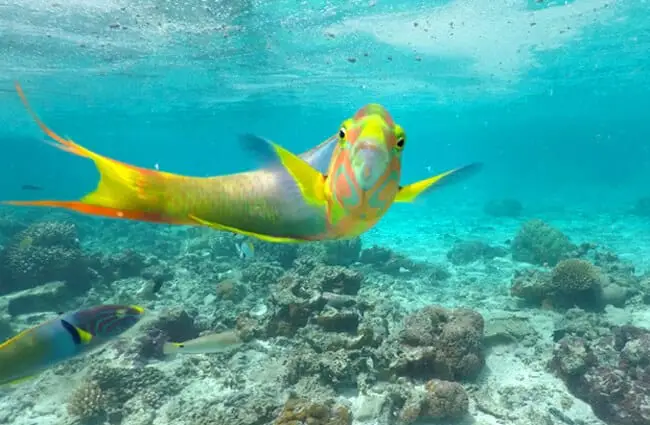
Parrotfish and Humanity: Interaction and Conservation
The relationship between parrotfish and humans is multifaceted, encompassing cultural significance, economic value, and the critical need for conservation.
Cultural Significance and Human Interaction
In many coastal communities, particularly in the Caribbean and Pacific, parrotfish are a traditional food source. Their vibrant colors also make them popular subjects for underwater photography and marine art, contributing to the tourism economy through snorkeling and diving. However, this interaction also brings challenges.
- Fishing Pressure: Overfishing, particularly of larger terminal phase males, can disrupt their complex social structures and reproductive cycles, leading to population declines.
- Habitat Degradation: Coral reefs, the primary habitat for parrotfish, are threatened by climate change, pollution, and destructive fishing practices.
Responsible Interaction in the Wild
For divers, snorkelers, or anyone encountering parrotfish in their natural habitat, responsible behavior is paramount.
- Observe, Do Not Touch: Never touch, chase, or harass marine life. This can stress the animals and disrupt their natural behaviors.
- Maintain Distance: Give parrotfish ample space to feed and move freely.
- Support Sustainable Tourism: Choose tour operators who adhere to strict environmental guidelines and promote responsible marine interactions.
- Report Concerns: If you witness harmful activities or distressed marine life, report it to local authorities or conservation organizations.
Caring for Parrotfish in Captivity: A Zookeeper’s Guide
Keeping parrotfish in aquariums, especially larger species, presents unique challenges due to their size, diet, and complex social needs. For zookeepers or advanced aquarists, careful planning and dedication are essential.
- Tank Size: Parrotfish require very large tanks, often hundreds or even thousands of gallons, to accommodate their active swimming habits and potential growth. Overcrowding must be avoided.
- Diet: A diet rich in marine algae is crucial. This can include high-quality flake or pellet foods formulated for herbivores, supplemented with fresh or dried seaweed (nori), spirulina, and blanched vegetables. Regular grazing opportunities on live rock are also beneficial.
- Water Quality: Pristine water conditions are non-negotiable. Robust filtration, regular water changes, and stable parameters (temperature, salinity, pH) are vital for their health.
- Habitat Enrichment: Provide plenty of live rock with crevices for shelter and grazing surfaces. Mimicking their natural reef environment helps reduce stress.
- Social Dynamics: Research the specific species’ social requirements. Some may be kept individually, while others can be in groups or harems if the tank is large enough and social dynamics are carefully managed. Introducing new fish should be done cautiously.
- Avoid:
- Small Tanks: Confining them to inadequate spaces leads to stress, stunted growth, and aggression.
- Improper Diet: A diet lacking in plant matter will lead to nutritional deficiencies and health problems.
- Aggressive Tank Mates: Avoid housing them with overly aggressive fish that might harass them, or with very small, delicate fish that they might accidentally injure.
- Rapid Environmental Changes: Sudden shifts in water parameters can be highly detrimental.
Conclusion: Guardians of the Reef
The parrotfish, with its vibrant colors, unique beak, and tireless grazing, is a true marvel of the marine world. These “gardeners of the reef” are not merely beautiful inhabitants; they are indispensable engineers, constantly shaping and maintaining the health of our planet’s most biodiverse ecosystems. From producing the very sand beneath our feet to ensuring the survival of coral colonies, their contributions are immeasurable.
As we continue to explore and understand the intricate web of life beneath the waves, the story of the parrotfish serves as a powerful reminder of the interconnectedness of nature and the urgent need for conservation. Protecting these extraordinary fish and their reef homes is not just about preserving a single species; it is about safeguarding the future of entire marine ecosystems for generations to come.

![Red Angus Closeup of a beautiful Red Angus cowPhoto by: U.S. Department of Agriculture [pubic domain]https://creativecommons.org/licenses/by/2.0/](https://animals.net/wp-content/uploads/2020/03/Red-Angus-4-238x178.jpg)




![Red Angus Closeup of a beautiful Red Angus cowPhoto by: U.S. Department of Agriculture [pubic domain]https://creativecommons.org/licenses/by/2.0/](https://animals.net/wp-content/uploads/2020/03/Red-Angus-4-100x75.jpg)

